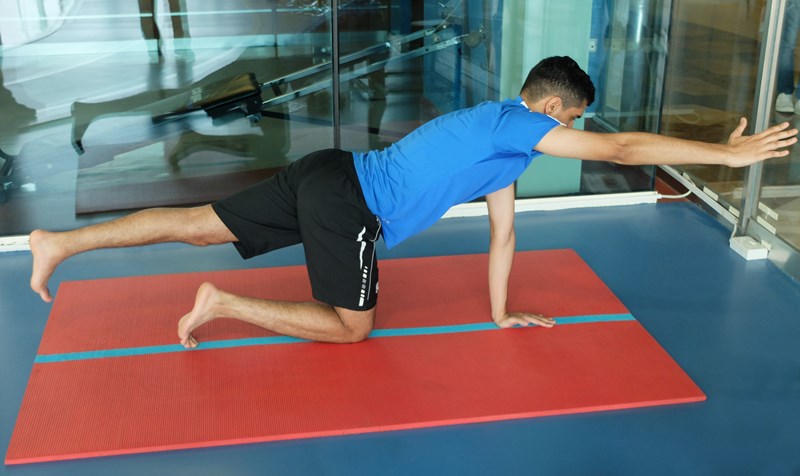Information about a piece of news titled Functional movement screening of athletes - the 9+ battery little is stable to detect changes over time
Functional movement screening of athletes - the 9+ battery little is stable to detect changes over time
Intoduction
A recently published study of 220 male professional football players in Qatar revealed that there is substantial variability in a widely used screening test, the Nine-plus screening battery (9+) test between two consecutive seasons, irrespective of injury and severity.

The study was performed at Aspetar Orthopaedic and Sports Medicine Hospital in Doha, Qatar, and is part of a larger PhD project led by a PhD student at the Oslo Sport Trauma Research Center, Arnhild Bakken.
Functional movement screening tests are popular
Functional movement tests have become increasingly popular as screening tool to identify the athlete at risk, but also used for clinical assessments to determine treatment response and assist in return to play decision making.
The 9+ is a functional movement test attempting to identify limitations in fundamental movement patterns assumed to predispose athletes for injury. However, the inter-season variability of the 9+ test is unknown.
To be able to meaningfully interpret differences in a test result, the normal variation, in the absence of any intervention, is important to document.
Project´s objective
The purpose of this study was therefore to examine the stability of the 9+ test between two consecutive seasons in professional male football players.
Large intra-individual variation in 9+ test from season-to-season
In total 220 football players completed the 9+ at the beginning of 2013 and 2014 seasons. Time-loss injuries in training and matches were obtained from the Aspetar Injury and Illness Surveillance Program. No intervention was initiated between test occasions.
Of the 220 players, 136 (61.8%) suffered a time-loss injury between the two tests, mainly to the lower extremity.
Large variability in measurements between seasons
The results demonstrated a small but statistically significant increase in mean total score of the 9+ test from season 1 to season 2, which tended to be greater for the injured than the uninjured groups. However, the variability was large between season 1 and 2, irrespectively of injury and severity.
Limited clinical applicability to detect change over time
The 9+ test showed large measurement error (SEM, 3.0 to 3.4 points), and a minimal detectable change (MDC) of at least 8 points were necessary to represent a real change in the 9+ test. This was true irrespective of injury and severity. Given the large SEM and MDC, it suggests that the 9+ total score inter-season variation is too large for the 9+ to detect change attributed to injury or clinical interventions.
However, the researchers behind this study emphasises that further studies are necessary to determine whether the 9+ test can be used to identify the player at increased risk of injury.
The study is published in BJSM. Besides Arnhild Bakken, the research team consisted of Stephen Targett, Tone Bere, Cristiano Eirale, Aziz Farooq, Hans Tol, Rod Whiteley, Erik Witvrouw, Karim Khan and Roald Bahr.

